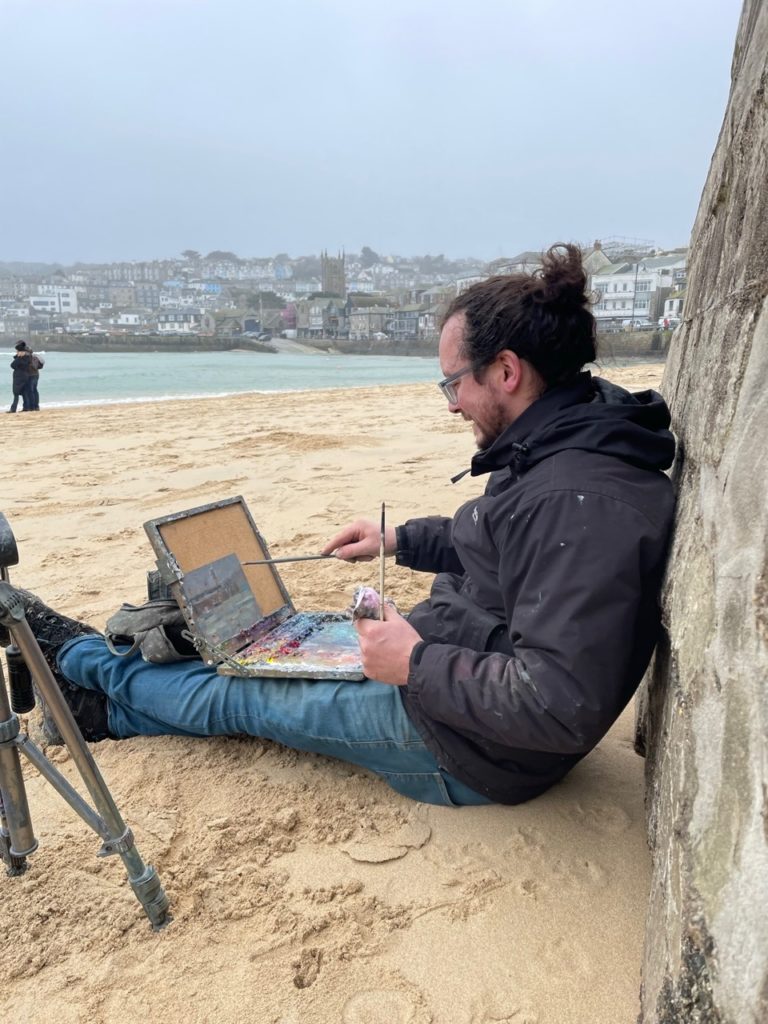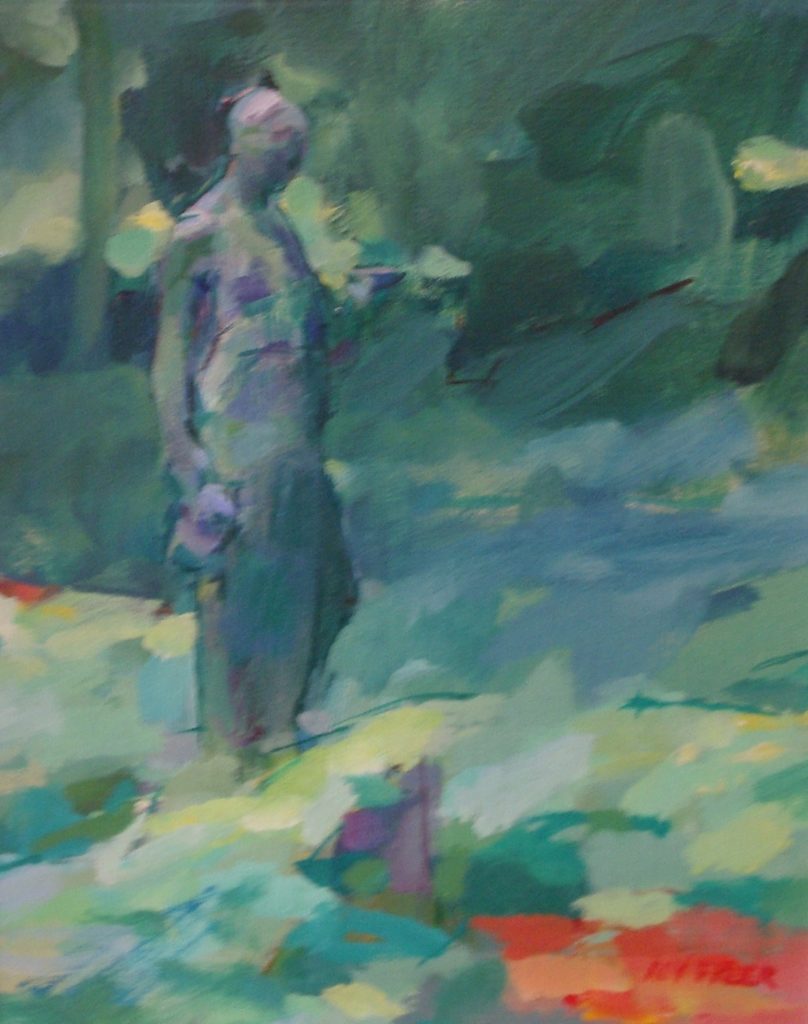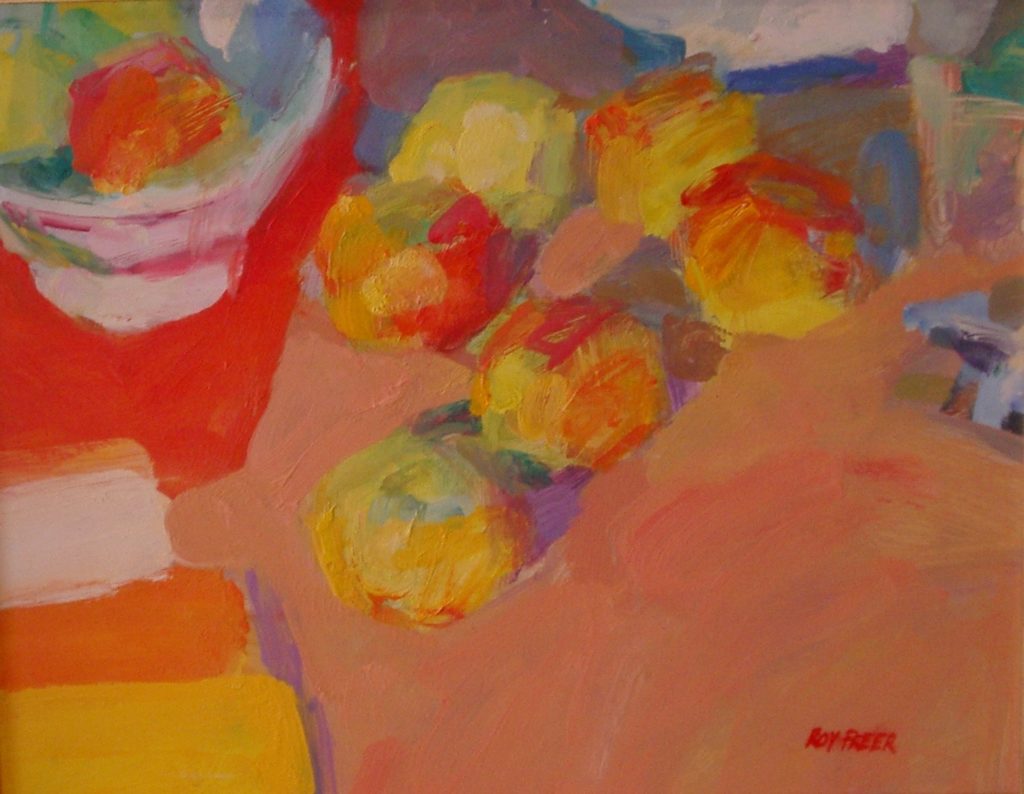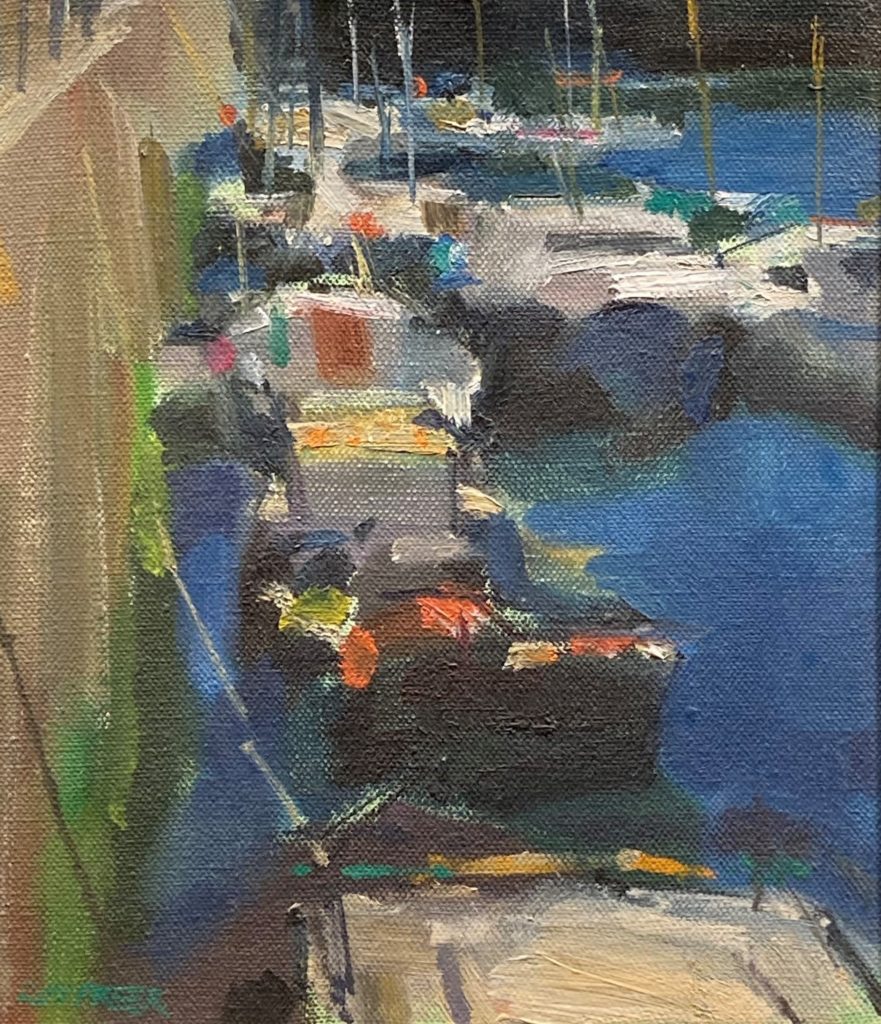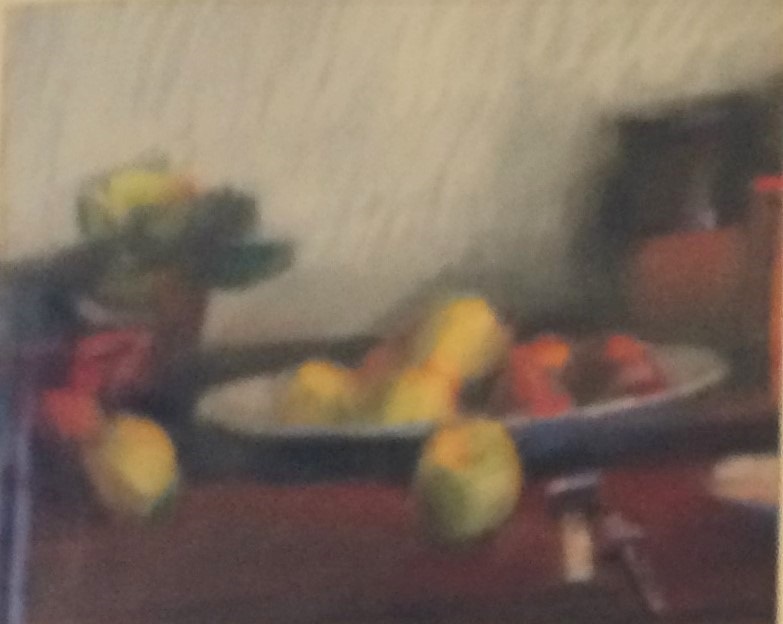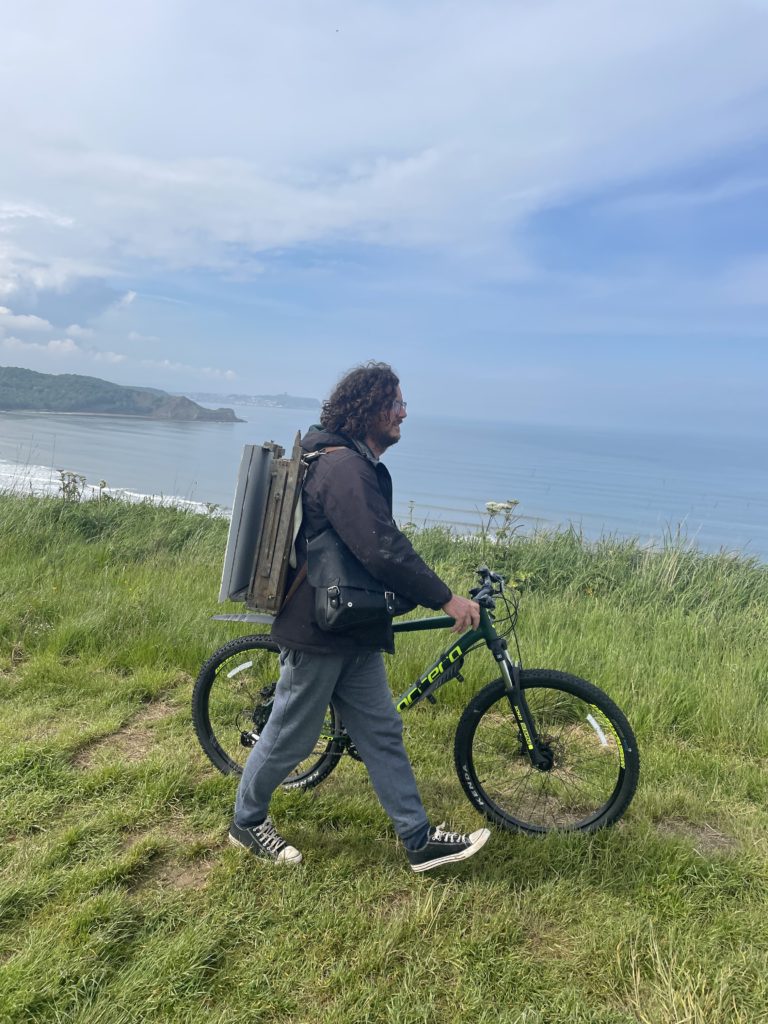
BIKE, painting essentials, coffee thermos, paint-spattered radio, South Yorkshire artist Andrew Farmer devoted six months to painting the Yorkshire coast and Cleveland Way solely for the Watermark Gallery in Harrogate.
The results of this commission, 58 paintings in all, are on show and sale in his North Landing show at Liz and Richard Hawkes’s contemporary art gallery in Royal Parade until November 12.
Born in Rotherham, and now living in Doncaster, Andrew is an elected member of the Royal Institute of Oil Painters (ROI). For North Landing, he revisited coastal places he remembered from childhood and explored more isolated locations along the Cleveland Way.
His painting journey started at North Landing, Flamborough, a hidden gem replete with white cliffs and emerald-green water. As he moved northwards, often on the edge of the coastal path on his bike, he stopped to take in different scenes; sailing boats out at sea, discreet coves and children playing on the beach.
“My aim is always to capture the characteristics of a place at a particular point in time,” says Andrew, whose painting path concluded at Staithes. “I love the view over the beck towards the sea from the high vantage point.”
On his return to his studio after each trip, he would work on a select few pieces, taking an initial oil sketch made outdoors and transforming it into a much larger, more imagined work, while also making use of his rare pencil drawings and reference photographs.
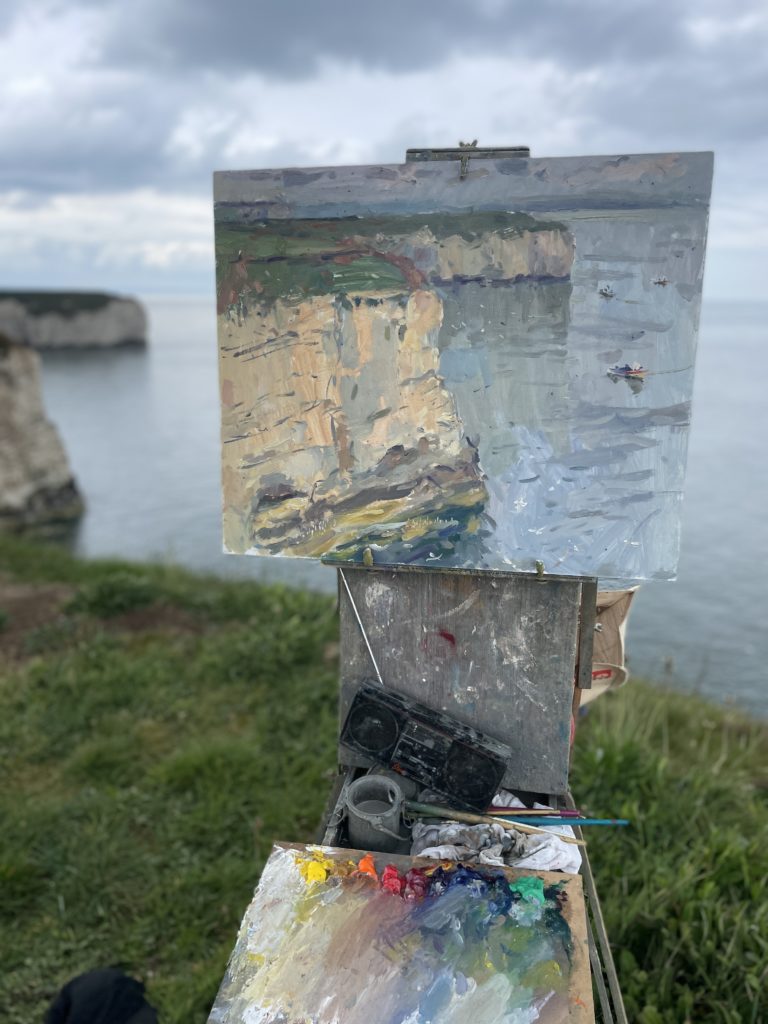
Here Andrew answers CharlesHutchPress’s questions on a bracing coastal journey from Flamborough to Staithes splashed in oil.
How did you meet Liz and Richard Hawkes?
“Liz and Richard came across my work during a show in Cambridge, and sometime afterwards touched base with me to see whether I’d like to show in their new bricks-and-mortar gallery in Harrogate. I jumped at the opportunity.”
Where did you study art and when did you first realise you had the eye for being an artist?
“From a very early age, around six or seven, was when I dedicated myself to becoming an artist. My formal education started at Doncaster Churchview College of Art, followed by a degree in Fine Art Painting at Canterbury Christ Church University, and finally studying on The Drawing Year at the Royal Drawing School, London.
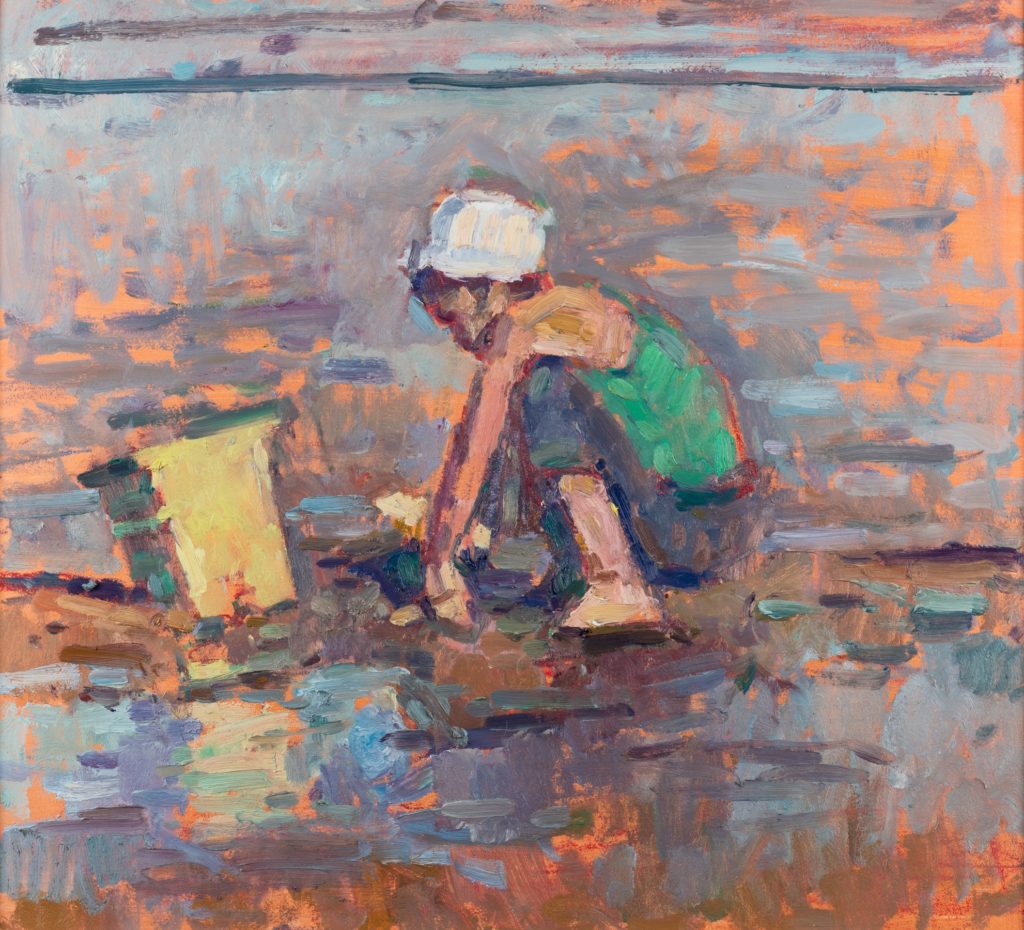
“Throughout my education, I’ve been incredibly blessed by the tutors that have guided me along the way, far too many to mention! But one of the most impressionable things for me was that almost all of my tutors were/are practising artists too, creating work purely for themselves, often through obsession.
“This is something I’ve always felt strongly about, to produce work first and foremost in tune with my personal interests and love for the subject, whatever that might be!”
Why favour painting in oils?
“I’ve painted in watercolour and acrylics in my early days, especially during the first years of art school. My mum purchased me my first set of entry-level oil paints at age 16, give or take!
“I remember squeezing the oils out onto a brand-new wooden palette and I loved everything about the medium: the smell, the buttery consistency and the ability to work and rework wet on wet. The medium really suits my inquisitive nature.”
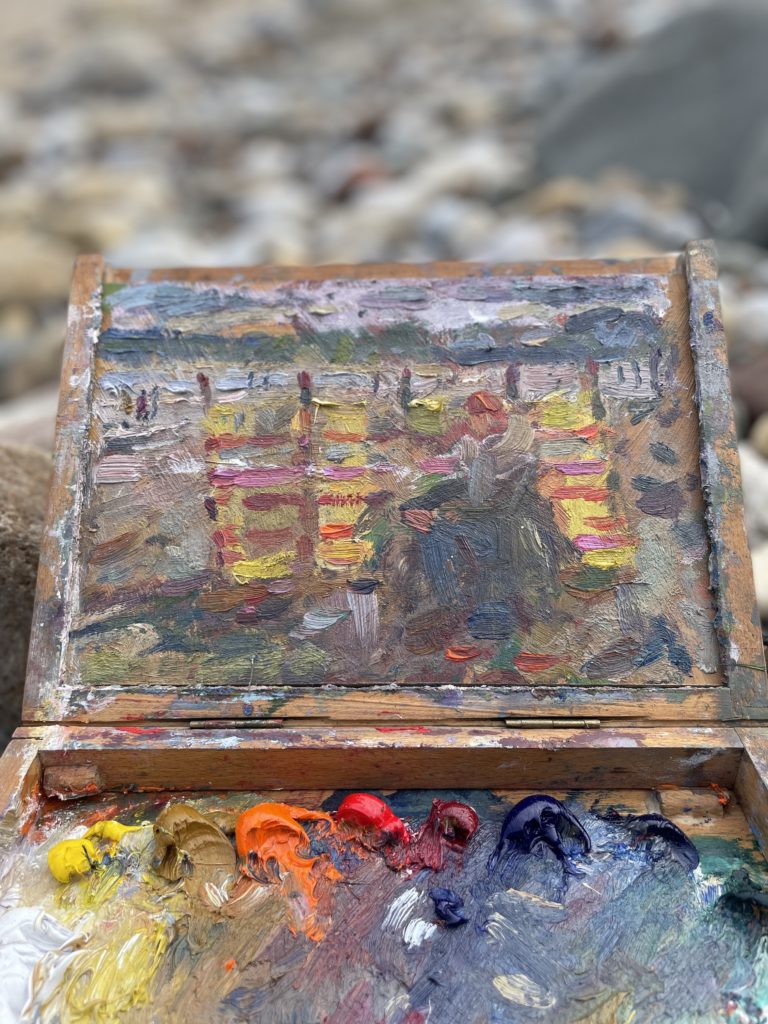
How did you structure your six-month project for Watermark Gallery?
“I had to be incredibly organised in creating the works for my North Landing show, from limiting my equipment to the bare essentials, including fresh coffee in a thermos, to planning out which stretch of the Cleveland Way I was going to focus on.
“I found it incredibly enriching to settle on one spot for a week, creating a series in and around Filey, before moving on. This enabled me to dig a little deeper, getting to know rock formations, beaches and colour palettes of each individual spot.
“Almost every painting in the show was worked over numerous sessions, returning again and again until completion. This also had its challenges in that, occasionally, I’d go back to rework boats for example, only to find the local fishermen were already out at sea and the boats were no longer resting on the foreshore. This happened mainly at Flamborough during the painting of one of the key pieces, North Landing.”
What does creating a painting over two or three sessions bring to the painting process?
“A lot of plein-air painters will start and finish a work in an hour or two, and that’s great so long as they’re satisfied with the result. Personally, I much prefer to rework paintings over a number of sessions where possible.
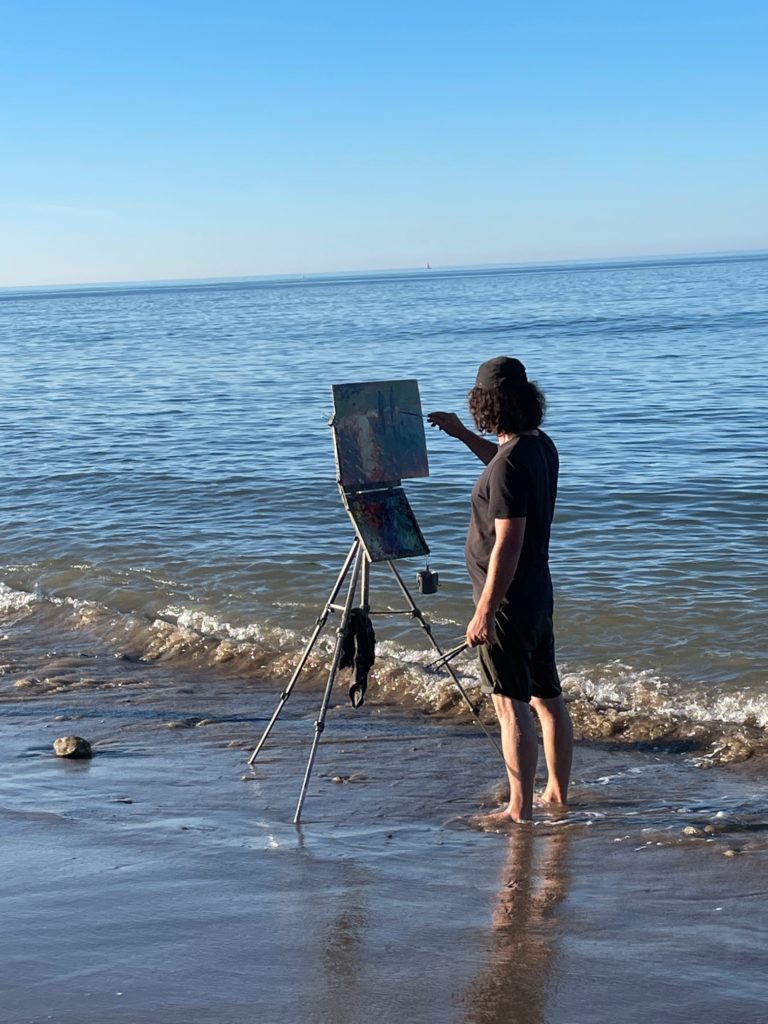
“I feel like each time I return, I’m standing on my own shoulders and can go deeper with my subject matter. And by this, I don’t mean more detailed. Sometimes it’s the complete opposite.
“I might spend time simplifying, stripping back unnecessary details and noise. It also means I’m able to work on much larger scales, something many plein-air painters would never entertain.”
What is a typical day for you painting in the open air?
“Every single day is different when it comes to painting outdoors, but they tend to have a similar ‘beat’ in terms of timing. I tend to break my day into two-hour sessions; some I start early to fit two sessions in during the morning, and then another two-three sessions in the afternoon.
“Two hours is the maximum amount of time I tend to spend on a painting before stopping and working on another. This is because the light can shift so much that it’s really impossible to continue without changing the whole piece.
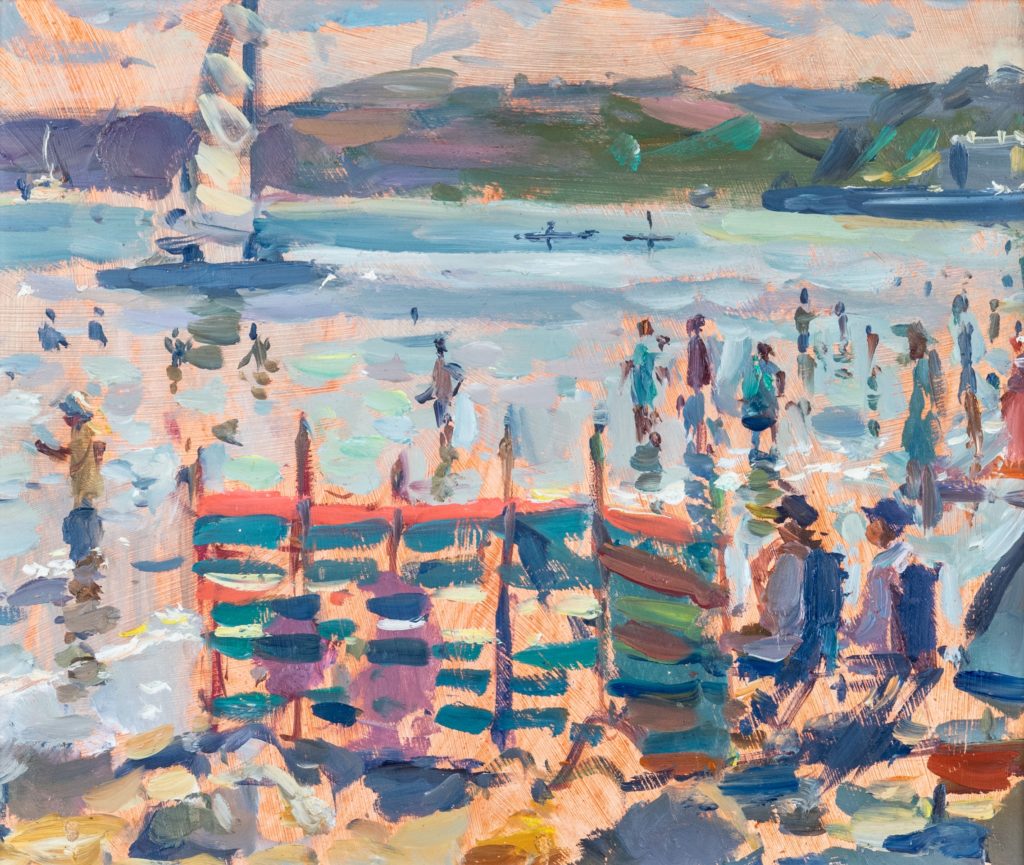
“I’ll then return to the same spot with a canvas to take a second shot at it, always checking the weather conditions before making a decision. Because I’m working from life, I can have anything from six to 20 paintings on the go at any one time, all at different levels in terms of progress.”
What do you love about painting the Yorkshire coast and the Cleveland Way?
“It’s such a personal thing for me to paint the Yorkshire coast. This is the area where I holidayed as a child with my brothers and sisters and also where I prefer to holiday with my young family.
“I feel at home along this coastline, both in terms of familiar locations and light, but also with the general public. I’ve met so many wonderful people when I’ve been out painting, one of the brilliant things about painting en plein air.”
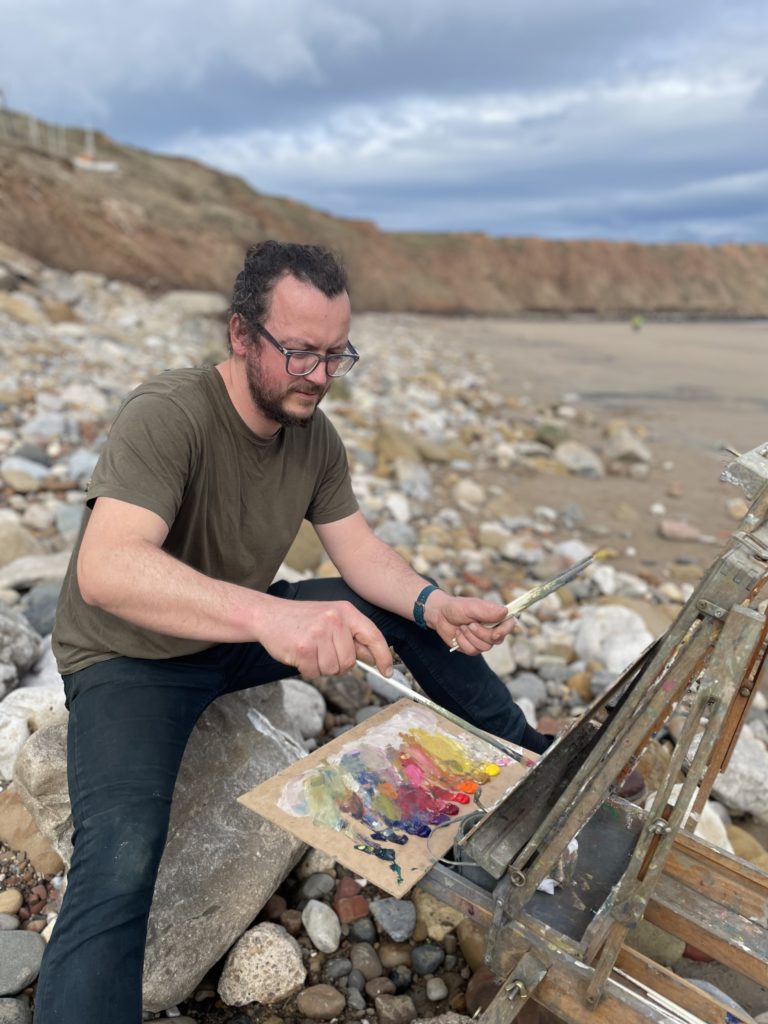
Is the light the key to it all?
“One of the key driving forces behind my work is definitely the light. However, I’m not interested only in painting sun-drenched sandy scenes.
“I love equally trying to capture the essence of a moody dusk scene when lights are just flicking on or trying to pin down a passing storm in the distance.
“Painting from life is incredibly satisfying and frustrating at the same time, with some light effects lasting only minutes!”
What do you love about living and working in Doncaster, South Yorkshire?
“I can have peace and solitude when I paint in the more rural areas close to home, and the opposite, the hustle and bustle of townscapes. There’s pretty much every subject on offer within a stone’s throw, which I love, because I can either walk or cycle, which is something I’m trying my best to do more and more.
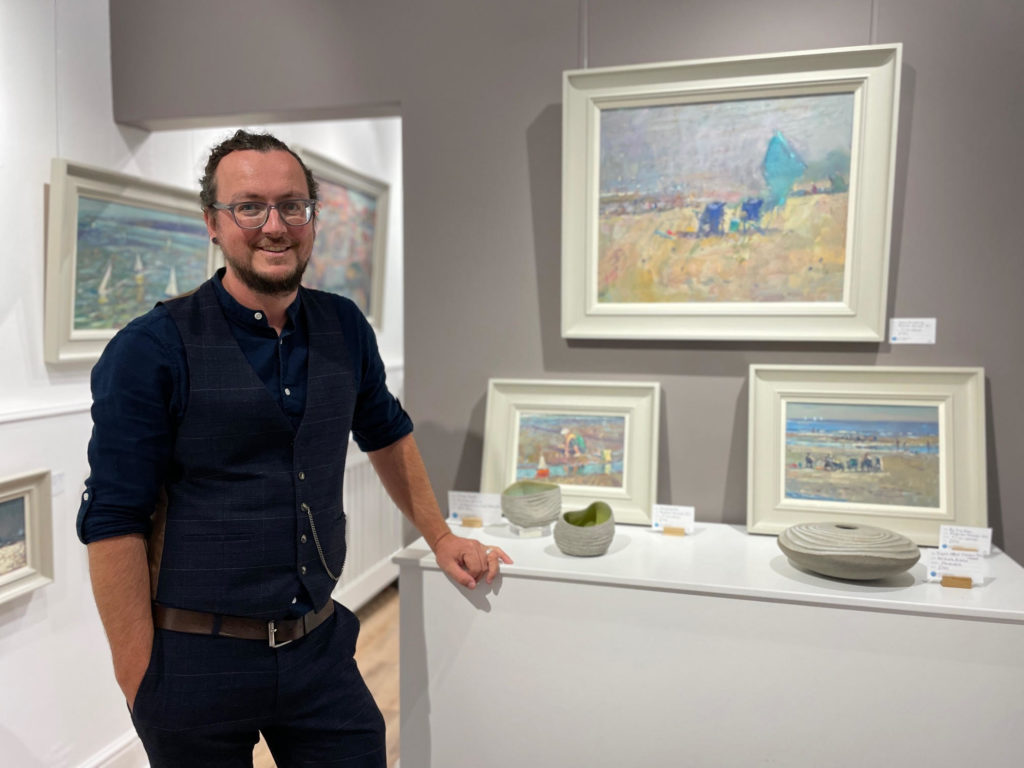
“The connections to major cities via the train station are just fantastic too, which makes things much easier when I attend meetings and exhibitions further afield.”
Who are your favourite painters and why?
“There are so many artists that have inspired and continue to inspire me to this day, some more well-known and obvious than others.
My mum bought me my first book on the Impressionists at age 16. Until then I had no idea that painting outdoors was a possibility. Among the Impressionists, I adore Monet, Sisley and Pissarro especially. I also love the solidity, determination and integrity of Cezanne.
“A lesser-known figure and painting hero of mine is Albert Marquet, but especially his beautiful and simple drawings from life. He had an incredible way of simplifying the world on canvas.”
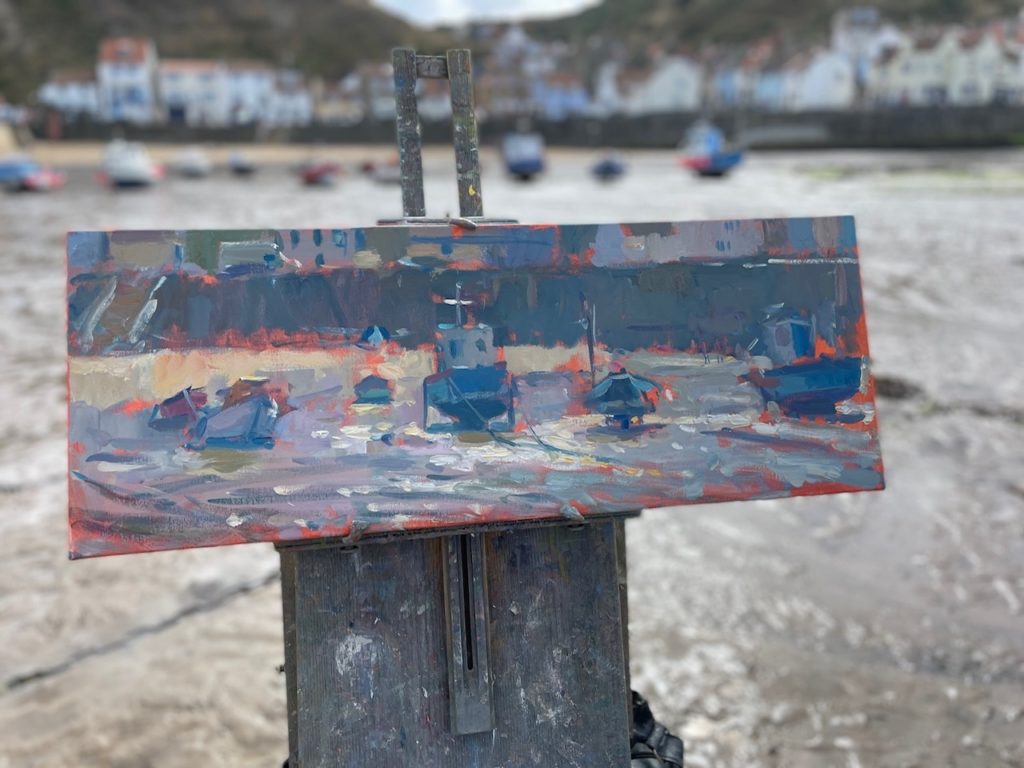
What does your election to the Royal Institute of Oil Painters mean to you?
“This has been a dream come true, and something I’m still beaming about. Historically, the ROI has included some of the most notable painters in British history and it’s an absolute honour to be a part of this.
“Being elected a member in one way has changed everything for me, and in another way it has changed nothing. That’s quite an odd thing to say but I guess what I mean is that when I’m in front of the canvas and the subject, everything fizzles away and it’s back to the grind of painting. It never seems to get easier, if anything, it’s getting harder as I go on.”
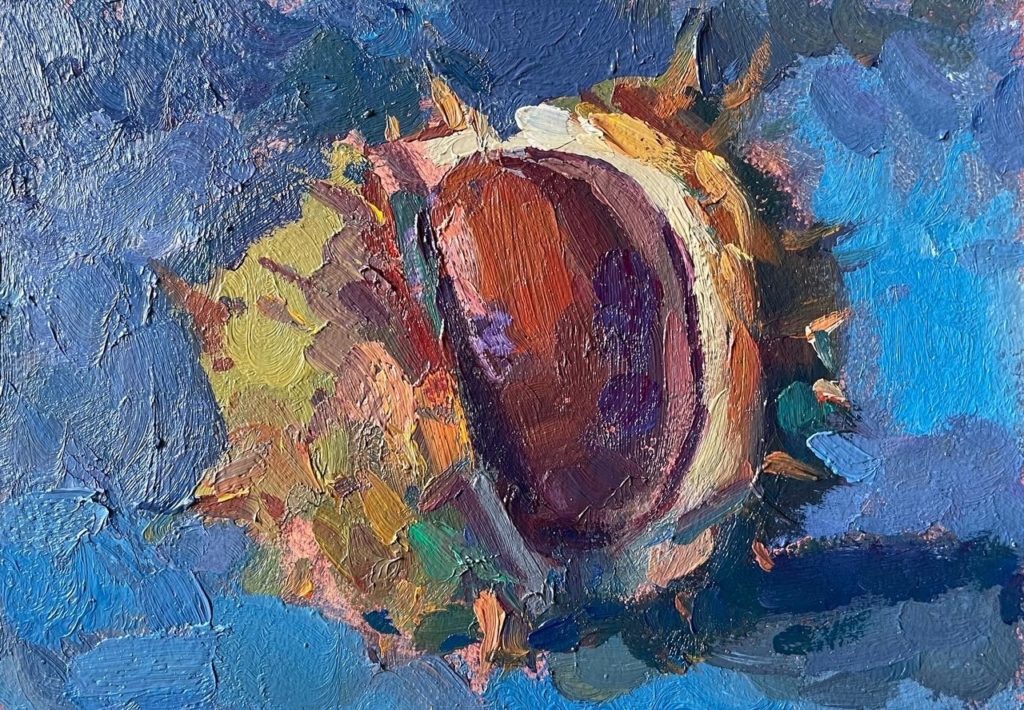
What will be your next painting project?
“My next series of paintings is focused on the humble conker (the horse chestnut). Painting these beautiful little objects has become an annual ritual. Every autumn since around 2007, I go out and collect them from under the trees, being careful to keep the spiky shell intact.
“More recently, my kids have also been supplying me with the conkers they’ve collected in the playground, which is so touching that they think of me and my work when they’re in school.
“I love to wait until the shell splits naturally and reveals the jewel inside. I paint these in my garden studio, as I listen to old records, podcasts etc. It’s a great and fun little series that I always look forward to. This latest collection includes 25 conkers, which I can’t wait to share via my website in the coming weeks at www.andrewfarmerfineart.com”
Andrew Farmer: North Landing runs at Watermark Gallery, Royal Parade, Harrogate until the tide goes out on November 12. Opening hours: Tuesday to Saturday, 10am to 5pm.
